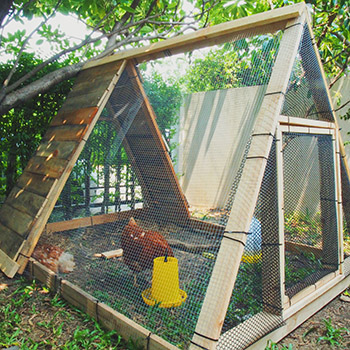Homeowners Associations think they control everything in your neighborhood. But guess what? You’ve got options to push back against ridiculous rules without breaking the law. However, can you outfox HOA?
We’ve gathered some clever ways to outsmart your HOA while staying within the rules. Just remember, some tactics might depend on your local regulations.
Here are simple, legal strategies to (respectfully) outfox your HOA. The goal? Stand up for your homeowner rights without starting a neighborhood battle
Can You Outfox HOA Rules & Regulations?
A homeowner’s association is intended to protect property values by maintaining consistent community aesthetics and standards. But some arguably take that mandate too far with an excess of arcane rules that homesteaders would violate by default.
Here are some common HOA restrictions that can really get in the way of homesteading. Many HOAs prohibit visible vegetable gardens, which can be frustrating for anyone who wants to grow their own food. They may also limit the number of trees you can plant, making it hard to create a lush, self-sustaining environment.
Additionally, some HOAs ban agricultural animals like chickens, goats, or even beehives. This can be a major obstacle for those who want to raise livestock or have a small farm. There are also regulations that can prevent tiny homes or accessory dwellings, especially with strict garage requirements.
Lastly, rules around compost piles or rain barrel placement can be problematic. These are great tools for sustainable living, but many HOAs regulate where you can place them, making it harder to implement eco-friendly practices.
However, not all HOAs push back against eco-friendly residents. Many embrace features like green spaces, community gardens, herb trails, orchards, or even chicken coops as attractive perks for homeowners. The key is finding common ground.
Related: Living In A HOA Zone: Can I Be Self-Sufficient?
Strategy 1: Read the Fine Print

Before making plans—or unintentionally breaking rules—get copies of your HOA’s master deed, covenants, bylaws, and any extra regulations. Start by reading them carefully.
Start by using the Table of Contents to quickly navigate through the document. Focus on sections that deal with landscaping and gardening rules, as these are often the most relevant for homesteading. Additionally, check for any clauses related to pets or livestock, since they may impact your ability to raise animals.
Don’t forget to look into building and accessory dwelling codes, especially if you’re planning to add structures like tiny homes or sheds.
Finally, review any allowances for sustainability features like solar panels or composting bins. These sections will help you understand the HOA’s rules and determine where there might be room for compromise.
Don’t stop there—read every rule, definition, exception, and provision closely. Look for pathways or loopholes that might support your homesteading plans.
If anything seems unclear or outdated, ask your property management for clarification. Knowing the full legal scope upfront is essential.
Strategy 2: Can You Outfox HOA by Making a Compelling Case?
In many communities, HOA rules automatically ban homesteading elements because it’s easier than reviewing every exception. However, a respectful and well-thought-out appeal could convince a sympathetic board to approve your plans upfront.
To increase your chances of approval, start by scheduling a meeting with board members to present your case. Bring evidence of the benefits of homesteading, such as sustainability, health, and education. You can also suggest a pilot program for trustworthy homesteaders as a way to prove your plan’s viability.
Additionally, offer solutions like lattices or planted buffers to keep your project out of sight. Finally, agree to size and spacing limits for elements like raised beds to ensure your plan fits within the HOA’s guidelines.
Coming prepared with research, visuals, testimonials, and win-win compromises will greatly improve your chances of approval before facing any violations.
Strategy 3: Join the Board
Can’t change the HOA rules just yet? Start by attending monthly board meetings and sharing your support for homesteading. Meeting minutes are public records, so your comments will be documented.
If you want to make a bigger impact, think about running for a seat on the HOA board. Having homesteader allies in leadership roles can open the door to several opportunities. For example, you could initiate reviews of outdated or overly restrictive rules. You could also suggest more sustainability-friendly policies that benefit the whole community.
Another option is proposing gradual phases for implementing homesteading practices. Additionally, you could rally like-minded neighbors to join the cause and strengthen your efforts. Even just one voice on the board can help spark positive change in the community.
Strategy 4: Can You Outfox HOA by Getting Creative with Compromises?

If the HOA grants limited approvals for your homesteading dreams, don’t worry—get creative with those allowances!
For example, many associations are open to ideas like backyard chicken coops, especially if they’re hidden from street view. They may also approve vegetables grown in patio planters, as long as they’re not in-ground gardens. Small livestock, such as ducks, rabbits, or Pygmy goats, are often allowed as well.
Some HOAs may even approve tiny homes as pre-approved Accessory Dwelling Units (ADUs). The key here is figuring out how to meet their guidelines and still make your homesteading dreams a reality.
So, can you outfox the HOA? By getting creative, it’s possible to find ways to work within their rules and still live the lifestyle you want.
In addition, if space is tight, consider shared community plots or renting nearby pastures for larger animals like cows or horses. For year-round produce, you can also use indoor methods like hydroponics or grow lights. Furthermore, hiding compost bins behind shrubs or trellises helps keep them out of sight.
The key is to meet HOA visual rules while staying self-reliant. With a little creativity and flexibility, there’s always room for compromise!
Dealing with Violations & Fines
In an ideal world, the HOA would support your sustainable efforts from the start.
In reality, though, you may encounter violations and fines while working to reach a resolution. It’s important to know how to handle this situation calmly and strategically.
Start by submitting a polite written request for approval. If your request is denied, don’t give up—attend the next board meeting and calmly explain your reasons. If you still don’t get approval, you can appeal to have any violations dismissed once you’ve been granted permission.
When it comes to paying fines, it’s worth considering whether you should budget for potential legal fees. If the situation escalates, an HOA attorney can help you fight unfair fines and may even push back with a cease-and-desist order, protecting your rights.
The Nuclear Option: Can You Outfox HOA with a Bold Move?
How to Reduce HOA Fees?
If the fees are the issue, not the rules, try reducing your costs:
- Opt out of certain services like lawn care or snow removal in exchange for lower fees, handling those tasks yourself.
- Get involved on the board, which has the power to renegotiate vendor contracts and lower community service costs.
Your fees should provide pleasant community perks. But can you outfox HOA if they no longer benefit you or become unaffordable? Instead of just stopping payments—unpaid dues can hurt your credit and even lead to foreclosure in states like Texas—explore ways to opt-out or reduce them.
Work cooperatively with the HOA to find an affordable solution that protects your finances and home investment. When possible, prioritize preserving neighborhood harmony. Begin negotiations with an open mind, offering compromises to work within HOA rules.
Be relentless yet respectful in voicing your perspective on outdated bylaws. Highlight the benefits of homesteading to gradually influence HOA attitudes. You might even offer to guide the board on safely introducing eco-friendly changes.
Why You Should Never Hide Your Stockpile In Your Basement (Video)
How To Repurpose Old Items Into New Projects For Your Backyard














